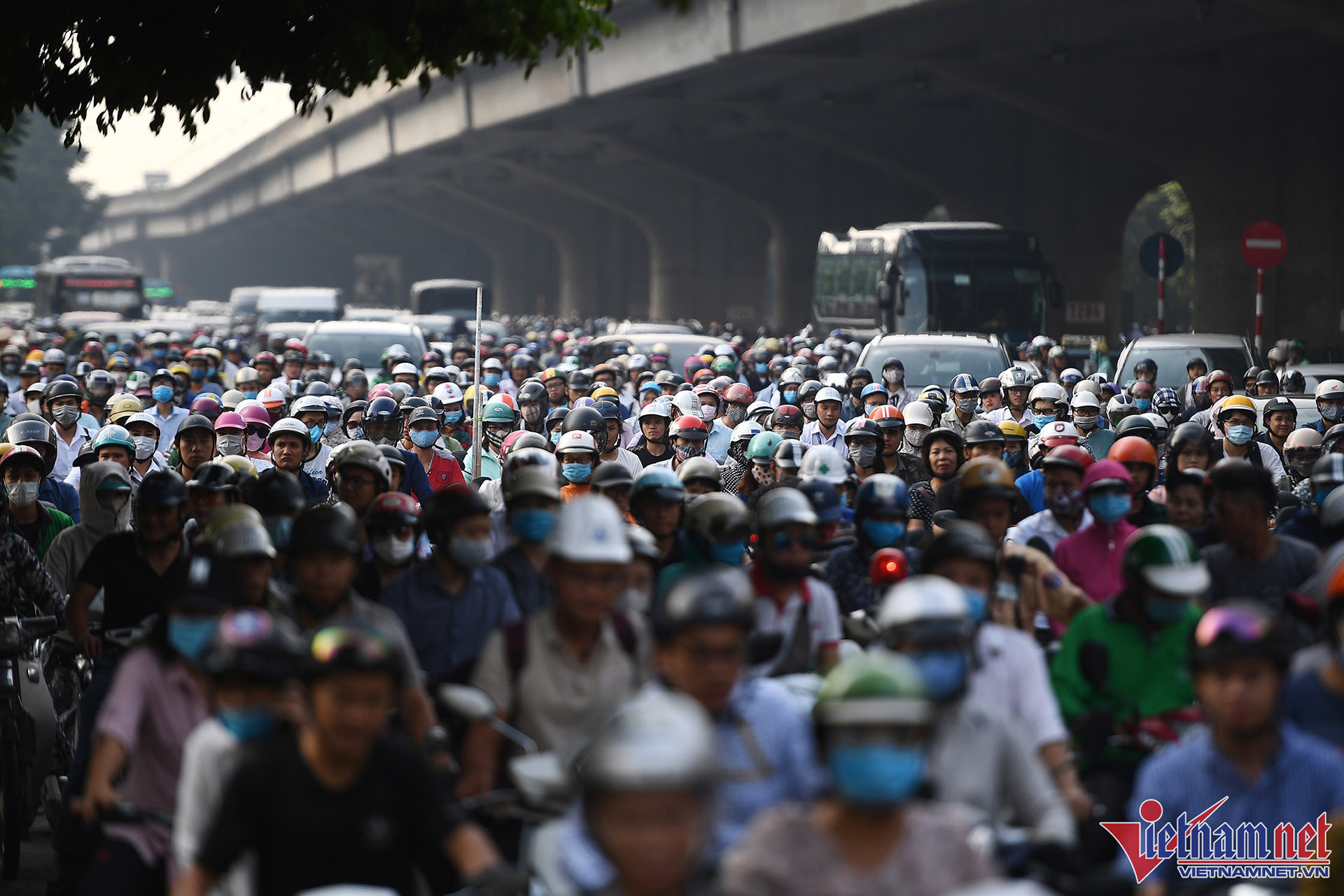The main culprit behind urban pollution

Vietnam currently has over 70 million motorbikes on the road, many of which use outdated technology and lack routine emissions checks.
According to the Department of Environment (Ministry of Agriculture and Environment), key sources of air pollution include transport-related emissions and road dust, with older internal combustion engine vehicles being especially problematic.
Environmental experts report that traffic - especially motorbikes - contributes 20% to 60% of total PM2.5 fine particulate pollution in urban air. In Ho Chi Minh City, motorbikes are a major source of this pollution, alongside industrial activity.
The situation in Hanoi is equally concerning. A World Bank report shows the city's average annual PM2.5 concentration is around 35 µg/m³ - well above national standards and triple the World Health Organization (WHO) recommendation.
PM2.5 not only endangers health but causes major economic losses. The World Bank estimates air pollution costs Vietnam 4% of its GDP annually - about 13 billion USD.
In Hanoi alone, respiratory-related medical costs and work absences are estimated at 1,500 VND per person per day. With an urban population of 3.5 million, this results in annual losses of approximately 2,000 billion VND (about 78.4 million USD).
These figures starkly highlight the extent of the crisis and the cost we’re paying - in both health and economic terms.
Vietnam currently only regulates the elimination of homemade vehicles and sets lifespan limits for cars. There is no mechanism yet to phase out old, high-emission motorbikes, which continue to circulate and worsen pollution.
Rush-hour traffic jams further compound the issue, as thousands of idling vehicles spew harmful gases in confined spaces. Prolonged congestion increases fuel consumption, lowers engine efficiency, and spikes emissions of CO2, CO, NOx, and PM2.5.
Still, replacing old vehicles isn’t easy. Mr. Thanh, a delivery driver, said, “This old bike took all my savings. It was second-hand when I bought it. I can’t afford a new one or even the cost of regular maintenance.”
Many acknowledge the problem but remain stuck. “During traffic jams, I feel like I’m inhaling poison - especially near bus stations or major intersections. Masks don’t help. But if I get rid of my bike, how will I work?” said Tran Van Hoang, a ride-hailing driver in Hanoi.
Solutions to pollution from aging motorbikes
As urban air quality worsens, Vietnam is taking steps to curb vehicle emissions. According to Le Hoai Nam, Deputy Director of the Department of Environment, tightening emissions standards for road vehicles is crucial.
The Ministry of Agriculture and Environment is finalizing a draft Circular on national technical regulations for motorbike emissions. This would be the first legal document in Vietnam to set specific emission thresholds for motorcycles in use.
The draft outlines emission limits for two key pollutants - Carbon Monoxide (CO) and Hydrocarbons (HC) - based on engine type and age. Four tiers (Levels 1 to 4) indicate progressively stricter controls. This regulation would serve as the basis for periodic emissions testing and gradual removal of outdated, high-emission bikes from urban traffic.
The rollout is designed cautiously and in phases. Starting January 1, 2027, pilot testing will launch in Hanoi and Ho Chi Minh City, where air pollution is most severe.
From January 1, 2028, the program will expand to major cities like Hai Phong, Da Nang, Can Tho, and Hue. By 2030, motorbike emissions testing is expected to be implemented nationwide.
This timeline allows time for public, business, and government preparedness, while supporting the creation of an emissions testing network and encouraging a shift to cleaner transport.
Deputy Director Nam noted that motorbikes and cars are still the primary means of transport for most Vietnamese. As such, this policy will have a widespread impact. Changing personal transport habits is essential for reducing emissions.
Yet practical hurdles remain. Cost is a major barrier. For low-income households, even a small testing fee could be burdensome. Moreover, Vietnam lacks financial aid programs to support vehicle upgrades or buyback schemes, unlike other countries.
The bigger challenge is changing behavior. Vietnamese people have used motorbikes without emissions checks for decades. Without sustained media campaigns and concrete incentives, the policy may suffer from poor implementation.
Implementing emissions standards for motorbikes is not only a requirement of sustainable development - it’s an opportunity for Vietnam to improve urban air quality, public health, and environmental resilience.
Though the rollout will take time and coordination, with decisive action, transparency, and appropriate support, a clean and breathable urban atmosphere - once a natural asset - can be restored for today and tomorrow’s generations.
nongnghiepmoitruong.vn